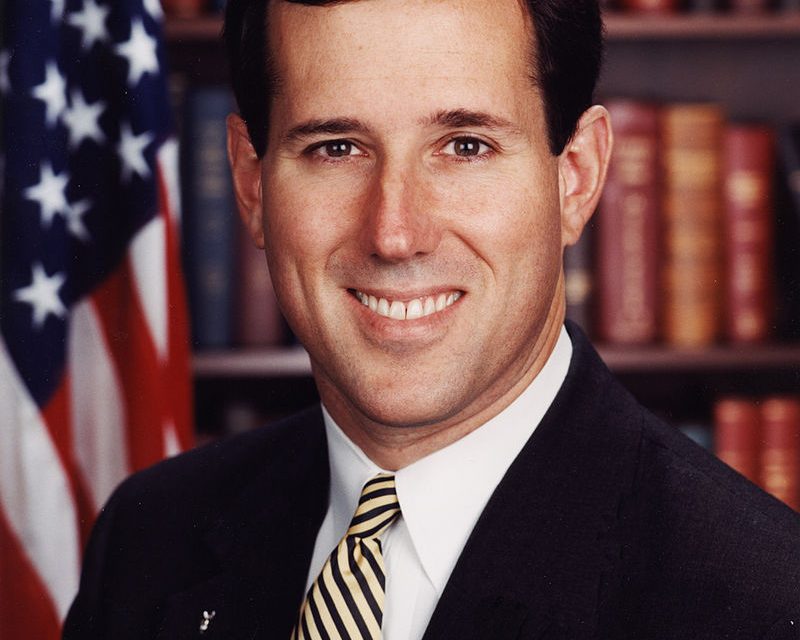Updated July 21, 2019-
So, former Sen. Rick Santorum unsuccessfully campaigned for president again in 2016. But he failed to do as well in 2016 as he did in 2012.
His 2016 site remained active for a few years afterward.
Ostensibly, he didn’t learn the marketing lessons from his failed 2012 campaign.
Most recently he has been on CNN. Without even considering his political views, the former senator from Pennsylvania will never have a prayer unless he makes some marketing changes.
Unintentionally, Mr. Santorum’s unsuccessful presidential campaign — with inadequate branding — provided business with Internet marketing lessons.
Perhaps you noticed the crass, inflammatory results in searching the Web for him. When you searched for “Santorum,” the deprecating site of “spreadingsantorum.com” was first on Google, Bing and Yahoo.
For curious voters interested in the campaign, it was an especially disappointing search. The site is no longer ranked No. 1 for the keyword, Santorum, thanks to Wikipedia, but remained in the top 5.
The derogatory site was created in 2003 by a part owner of The Stranger publication in Seattle, who was annoyed by then-Sen. Santorum’s comment about a U.S. Supreme court ruling that was favored by the gay community.
Understandably, Mr. Santorum complained to Google about the rankings – after all there are precedents. Indeed, it can be argued that Google could do something about it.
You might recall Google penalized the derogatory monkey-face depictions of Michelle Obama. There are countless security examples from when Google and the other search engines have issued a warning about a Web site when it believes a site is a security risk to users.
Until and unless Google and the other search engines take corrective measures, the Santorum campaign should have focused on what it could control.
However, the campaign failed to use best practices in Internet marketing.
Its salient shortcomings:
- Failure to use SEO techniques
- A call to action without giving the right incentives – branding and value propositions
- Poor organization – lack of preparedness
Without even considering his political views, the former senator from Pennsylvania will never have a prayer unless he makes some marketing changes.
Failure to use SEO
As a result of his strong showing from largely grass roots efforts, Mr. Santorum’s campaign attracted an unprecedented number of voters who were curious about him. They could find the right site easier when they search using the key words, “Rick Santorum.”
But if they searched using “Santorum,” they get the derogatory site.
In effect, however, the campaign allowed Mr. Santorum to become a victim of political sabotage sans common SEO procedures.
Yes, the Santorum campaign had options to effectively to eliminate the adverse impact of the sarcastic site. Curiously, “spreadingsantorum.com” only has a Google page rank of 5. That wasn’t insurmountable for the Santorum campaign, if it employed proper SEO techniques, and understood how to win on Google.
Hint: If you can win on Google, you will on the other search engines, too.
So see the following:
— Five factors to get peak Google results
— Understand the 23 key questions Google has about your Web site
— Checklist: 14 strategies to rock on Google
As for the Santorum campaign, it needed to develop and focus on one site – just one site dedicated to the candidate. But it mistakenly directed Internet users to a donation form – one of two duplicate content sites (supportricksantorum.com and ricksantorum.com).
Premature call to action
The Santorum donation site set a poor example by only asking for money. There were no stellar branding and value propositions. Visitors weren’t readily able to learn anything about him – neither his policy positions nor his background.
All of this meant the right sites showed up twice – but they were below the fold on Google.
Moreover, duplicate content hurt the cause. Two different domain names containing similar content defeated the purpose. The two sites effectively insured his Web presence was diluted – the search engines don’t know which was paramount for users.
Poor organization – lack of preparedness
With such a confusing marketing approach, the campaign inadvertently sent two unintended signals.
Firstly, it showed poor organization and lack of preparedness — note the verbiage in this Santorum tweet:
“Your great support has caused some unexpected downtime on our website! You can still support us at our temp page: ricksantorum.com”
Because the campaign instituted some redirects – the tweet sent people to the donation site. That’s a violation of best practices in marketing – never assume the voter has enough incentives before you ask for a vote or beg for donations.
Secondly, such strategies — unbranded donation page and desperate-looking tweets — left users with the impression that he’d fail because he was desperate for donations.
Further, as an example of over-reaching, the campaign constantly changed the tag line that appeared on the search engines. The candidate needed to be consistently repetitive with his branding and Web presence. Aside from the duplication issue and failure to install the donation page in one site, he needed to attract thousands of new links from good Web sites.
Whether he realized or not, failure to take such precautions adversely impacted his credibility as a viable candidate. After all, even if he could have won his party’s nomination, he would have faced a Democrat who long ago demonstrated extraordinary Internet expertise.
Good Internet marketing lessons for business from Mr. Santorum.
From the Coach’s Corner, for more resources, see this portal’s Marketing and Tech archives, which are packed with solutions.






